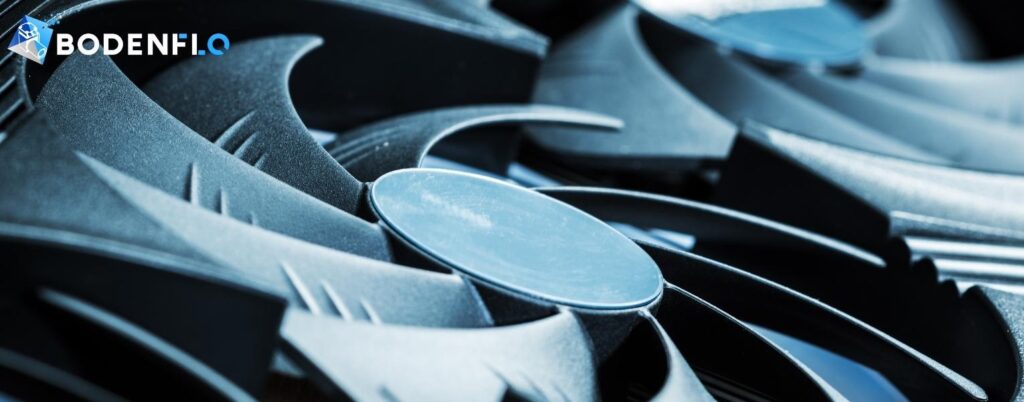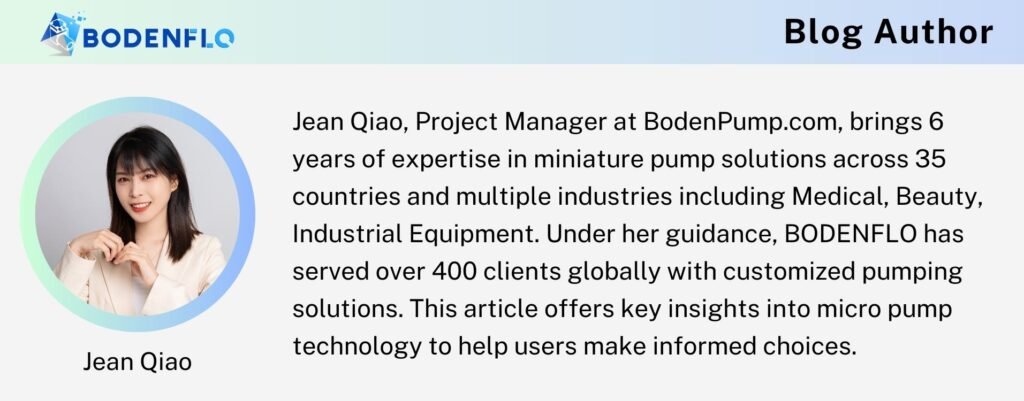
Ever been perplexed by inconsistent flow rates in your DC miniature diaphragm pump? Maybe you've experienced issues where an application required a precise level of flow control, but your current setup just isn't cutting it. These are common pain points in a myriad of industries—ranging from healthcare to manufacturing—that depend on accurate pump flow rates.
Don't worry, this comprehensive guide aims to simplify the complex. We'll walk through various tried-and-true methods for controlling the flow rate in DC miniature diaphragm pumps, providing practical solutions for common challenges.
Keep reading for in-depth insights into flow control mechanisms, complete with actionable advice from our years of industry experience.
Why Is Flow Control Important?
Accurate flow control isn't just a technical specification; it's a necessity that has far-reaching implications across various industries. Let's delve into why this matters so much.

In the medical field, for instance, dialysis machines, intravenous drug infusion pumps, and various life-support equipment depend on precise flow control for patient safety. Even a slight deviation in the flow rate can result in under-dosing or overdosing, causing potential harm to patients.

In industrial settings, processes like chemical dosing, waste treatment, or cooling systems need consistent flow rates for optimal performance. Inaccurate flow control can lead to inefficiencies, increased costs, and even catastrophic failures in some instances.

In manufacturing, automated assembly lines rely on specific flow rates for applications such as paint spraying or adhesive application. Variations in flow can lead to product defects, recalls, and tarnished brand reputation.

So, when we talk about the importance of flow control, it's not just a matter of improving performance—it's often a critical factor in ensuring both safety and quality across multiple sectors. The necessity for precise flow control is, therefore, an integral part of any application that involves fluid movement, be it air, water, or more complex media.
What Are the Core Methods for Flow Control?
When it comes to the management of flow rates in DC miniature diaphragm pumps, a variety of approaches are available, each with its own set of advantages and disadvantages. Here's a detailed look at some of the core methods for flow control.

Voltage Regulation
The most straightforward method is Voltage Regulation. By simply modifying the voltage supply to the pump, you can adjust its speed and, consequently, the flow rate. Increasing the voltage will ramp up the motor speed, resulting in a higher flow rate. Conversely, a lower voltage will slow down the pump, reducing the flow rate. While this method is simple, it may not offer fine-grained control.
Pulse Width Modulation (PWM)
Pulse Width Modulation (PWM) offers a more refined means of control. By altering the duty cycle of the electrical pulses powering the pump, PWM permits meticulous control over the flow rate. This method is particularly useful when the application demands a very specific and consistent flow rate.
Learn more about PWM Control here.
Electronic Control Units (ECUs)
Then we have Electronic Control Units (ECUs), which are programmable devices that can automatically adjust the voltage or PWM signals as per your requirements. They provide a sort of "set it and forget it" solution but at a higher cost.
Find more ECU insights here.
Throttling
Throttling involves using a throttle valve or flow controller on the pump's output line to control the flow rate. However, this method could create backpressure issues, affecting the pump's efficiency.
Feedback Systems
Lastly, Feedback Systems are suitable for more complicated applications. These systems utilize sensors to provide real-time data, allowing for instantaneous adjustments in flow rate. This is ideal for situations requiring highly precise control.
Understanding the nuances of each method can help you select the most appropriate flow control strategy for your specific application, balancing factors like precision, cost, and complexity.
How Do These Methods Compare?
Each method of flow control comes with its own set of trade-offs. Voltage Regulation is the simplest and most straightforward method, but it may lack the finesse required for applications demanding high precision. It's ideal for less critical applications where rough control suffices.

Pulse Width Modulation (PWM) offers more granularity in controlling flow rates, albeit with a steeper learning curve. It's perfect for situations where precise flow rate control is essential, but setting up PWM systems may require specialized knowledge.
Electronic Control Units (ECUs) bring automation into the mix. They offer the advantage of setting predefined parameters for easy management. However, the complexity and cost of these units might be overkill for simple applications.
Throttling, although a direct method, poses the risk of generating backpressure, which can affect the efficiency and longevity of the pump. This method is usually not recommended unless you have a specific need to counterbalance its drawbacks.
Feedback Systems are the most advanced, offering real-time adjustments based on sensor data. While they provide the highest level of control, they are also the most expensive and complex to set up.
In summary, your choice will largely hinge on what your specific requirements are—whether you prioritize simplicity, precision, or automation.
What Are the Challenges in Flow Control?

Navigating the nuances of flow control in DC miniature diaphragm pumps is not without its challenges. Oscillation is one of the primary concerns. If your control system is not finely tuned, oscillation can lead to inconsistent flow rates, hampering the performance and efficiency of your pump.
Backpressure is another challenge to watch out for, especially if you are using throttling as your flow control method. Excessive backpressure can put additional strain on the pump, affecting its longevity and causing premature wear and tear.
Speaking of wear and tear, this is an inevitable part of any mechanical system. However, improper flow control methods can accelerate this natural process, leading to more frequent maintenance or replacements. For example, if a PWM system is not correctly configured, it can lead to sudden stops and starts, causing mechanical stress.
Lastly, the complexity of setup is another challenge. Methods like PWM and feedback systems require a good understanding of both the pump and the control system, increasing the risk of human error during setup.
Being aware of these challenges will guide you in making a more informed decision when selecting your flow control strategy.
Are There Any Advanced Techniques?
Certainly, for those who are not satisfied with basic methods and are seeking more advanced control techniques, Cascade Control is worth exploring. This involves using multiple feedback loops to ensure an even finer level of control. In this setup, the primary controller's output serves as the set point for a secondary controller, allowing for more nuanced adjustments based on real-time measurements.
Programmable Logic Controllers (PLCs) offer another layer of sophistication. These are industrial digital computers specifically designed to control manufacturing processes. By integrating a PLC with your micro diaphragm air pump, you can program complex algorithms that can adjust flow rate based on a multitude of variables. This is particularly beneficial in settings that require the highest level of precision, such as pharmaceutical or chemical industries.
These advanced techniques might be more complex and cost-intensive to implement, but they offer unparalleled control, making them an excellent investment for applications where even the smallest variance in flow rate is unacceptable.
Conclusion
Controlling the flow rate in miniature diaphragm air/vacuum/liquid pumps involves various methods, each with its own set of advantages and disadvantages. Your choice will depend on your specific requirements, but understanding these options is the first step towards making an informed decision.
At BODENFLO, we're more than just a pump manufacturer; we're your partners in solving flow control challenges. Feel free to reach out for any consultation or advice.


